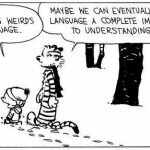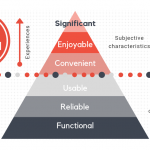I love intelligent content. My favorite thing is the name: intelligent. When you see content that’s broken out into small chunks, it can seem disjointed. But to be intelligent, the content isn’t just in small pieces. It has metadata. That’s what gives it context.
Today I saw a great example of chunked content that was, for lack of a better word, dumb.
What is intelligent content?
Intelligent content, in the words of Content Marketing Institute, is “content that’s structurally rich and semantically categorized and therefore automatically discoverable, reusable, reconfigurable, and adaptable.”
In more user friendly language? It’s content that has metadata. It may have tags, or categories assigned to it. It is connected content. As Carrie Hane says, it’s “future friendly”.
What is dumb content?
If content can be intelligent, it stands to reason that it can also be dumb. Right? I never thought about it before this morning, but then a friend sent me… this:

My friend saw this checklist on a medical form. No title. No context.
When I think of intelligent content, I try to consider what would work for a screen reader. I know it’s easy to look at images and words near each other and forget that the content needs to be connected for someone who can’t see their proximity. But in this example, I didn’t need my imagination. Yes, the content was chunked… but it didn’t have a caption or a title, so it had no context.
Friends don’t let friends write dumb content
The moral here may be different for different teams. It could be a reminder to always QA your forms. Or maybe it’s a reminder of the value of metadata. For me, it shows me why we need intelligent content.


